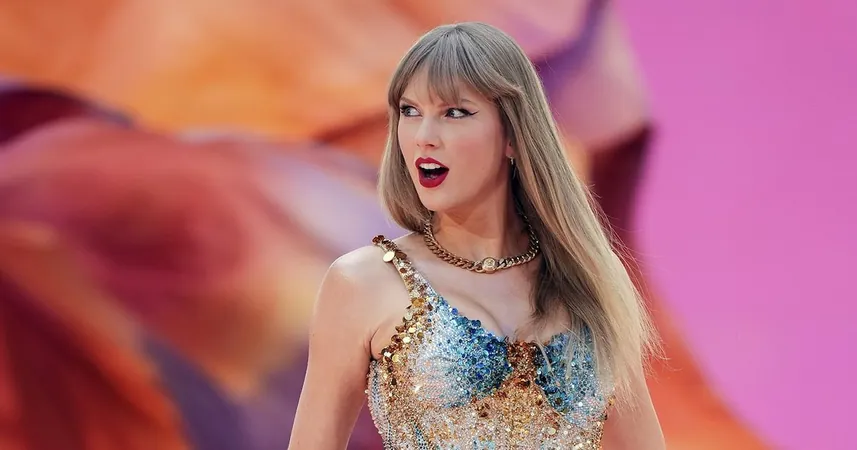
From Campus to Cosmos: How NASA is Empowering Students for Space Innovation
2024-11-05
Author: Benjamin
Human exploration of the lunar surface is an ambitious venture that requires innovative thinkers and technologists from across the globe. This magnificent task involves tackling a variety of challenges, from crafting the perfect astronaut boots to navigating the hazardous lunar dust, and even preparing for the complexities of landing on Mars. Recognizing the need for diverse perspectives in space exploration, NASA has been funding vital research initiatives through its Minority Serving Institutions, Research, and Education Project's Space Technology Artemis Research (M-STAR). With over $11.5 million awarded since its inception in 2020, M-STAR is committed to ensuring no potential solution goes overlooked.
Innovative Solutions for Astronauts
One exciting development is taking shape at Candeska Cikana Community College in Fort Totten, North Dakota, in collaboration with the University of North Dakota. Known as the Mapi Hapa project, this initiative focuses on designing advanced 3D-printed boots that offer astronauts the flexibility and comfort needed during extravehicular activities on the Moon. These boots aim to support the ankle's range of motion – a critical factor for astronauts undertaking long-duration missions.
Candeska Cikana is a tribal college serving the Spirit Lake Nation, dedicated to empowering its students, many of whom come from unique cultural backgrounds. Nicholas Bitner, an instructor and graduate student, notes the hands-on approach tribal students possess, which is invaluable in engineering projects. Thanks to the consistent funding from M-STAR, students are gaining practical experience while also getting paid work to support their research endeavors.
Tackling the Moon Dust Dilemma
In parallel, New Mexico State University in Las Cruces is making strides in tackling the challenges posed by lunar regolith, or Moon dust, which can severely affect machinery, spacesuits, and human health if inhaled. Through M-STAR funding, researchers have created cost-effective lunar regolith simulants that provide a reliable basis for testing lunar technologies under simulated lunar conditions.
Moreover, these simulants have already been shared with other M-STAR projects, including a 2023 initiative from the University of Maryland Eastern Shore. This project explores the viability of smart agriculture for potential lunar crop production using the lunar simulants, highlighting the innovative cross-collaboration fostered by the M-STAR program.
Aiming for Mars: Landing Technology
Shifting focus from the Moon to Mars, San Diego State University is leveraging M-STAR funding to enhance technologies for Mars entry, descent, and landing (EDL). The university's team is developing onboard algorithms designed to ensure that spacecraft can autonomously guide themselves to the optimal landing trajectory—a critical aspect of future Martian missions.
Chris Davami, one of the students involved in this project, attributes much of his educational opportunities and current progress to the M-STAR program. Thanks to the financial support and resources provided, Davami is now pursuing graduate studies and working on advanced trajectory planning for Martian exploration.
Cultivating a Diverse Workforce for Space Innovation
Through initiatives like M-STAR, NASA is not just investing in technology but also in the future workforce essential for advancing space exploration. By encouraging collaboration among students from different backgrounds, NASA aims to ignite creativity that can lead to groundbreaking innovations both in space and on Earth. The program's emphasis on mentorship, hands-on learning, and unique perspectives ensures that the next generation is well-prepared to face the complexities of space exploration.
In conclusion, M-STAR is a testament to the power of diversity in problem-solving. As NASA continues its quest for sustainable human presence beyond Earth, programs like these demonstrate the agency's commitment to harnessing talent from various communities to turn the once-impossible dreams of space exploration into reality. For more information about M-STAR, visit the NASA page [here](https://go.nasa.gov/442k76s).









 Brasil (PT)
Brasil (PT)
 Canada (EN)
Canada (EN)
 Chile (ES)
Chile (ES)
 España (ES)
España (ES)
 France (FR)
France (FR)
 Hong Kong (EN)
Hong Kong (EN)
 Italia (IT)
Italia (IT)
 日本 (JA)
日本 (JA)
 Magyarország (HU)
Magyarország (HU)
 Norge (NO)
Norge (NO)
 Polska (PL)
Polska (PL)
 Schweiz (DE)
Schweiz (DE)
 Singapore (EN)
Singapore (EN)
 Sverige (SV)
Sverige (SV)
 Suomi (FI)
Suomi (FI)
 Türkiye (TR)
Türkiye (TR)